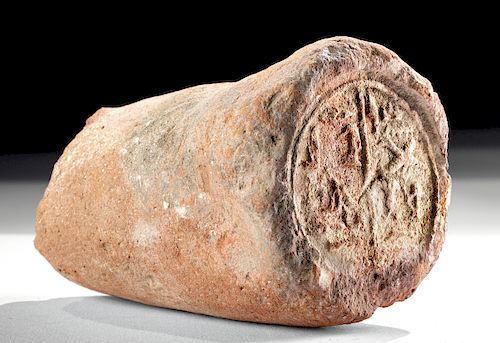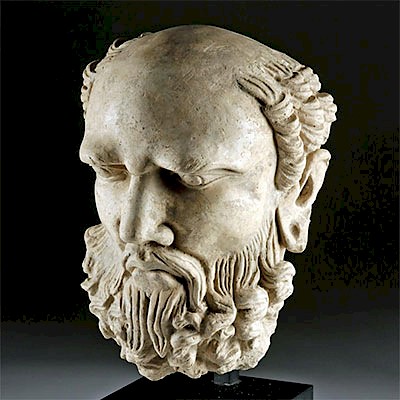Translated Egyptian Pottery Funerary Cone for Pawah
Lot 11
About Seller
Artemis Fine Arts
686 S Taylor Ave, Ste 106
Louisville, CO 80027
United States
Selling antiquities, ancient and ethnographic art online since 1993, Artemis Gallery specializes in Classical Antiquities (Egyptian, Greek, Roman, Near Eastern), Asian, Pre-Columbian, African / Tribal / Oceanographic art. Our extensive inventory includes pottery, stone, metal, wood, glass and textil...Read more
Categories
Estimate:
$1,200 - $1,800
Absentee vs Live bid
Two ways to bid:
- Leave a max absentee bid and the platform will bid on your behalf up to your maximum bid during the live auction.
- Bid live during the auction and your bids will be submitted real-time to the auctioneer.
Bid Increments
| Price | Bid Increment |
|---|---|
| $0 | $25 |
| $300 | $50 |
| $1,000 | $100 |
| $2,000 | $250 |
| $5,000 | $500 |
| $10,000 | $1,000 |
| $20,000 | $2,500 |
| $50,000 | $5,000 |
| $100,000 | $10,000 |
| $200,000 | $20,000 |
About Auction
By Artemis Fine Arts
Jan 16, 2020
Set Reminder
2020-01-16 10:00:00
2020-01-16 10:00:00
America/New_York
Bidsquare
Bidsquare : Ancient | Asian | Ethnographic
https://www.bidsquare.com/auctions/artemis-gallery/ancient-asian-ethnographic-4799
Featuring classical antiquities, ancient and ethnographic art from cultures encompassing the globe. Artemis Fine Arts info@artemisgallery.com
Featuring classical antiquities, ancient and ethnographic art from cultures encompassing the globe. Artemis Fine Arts info@artemisgallery.com
- Lot Description
Ancient Egypt, New Kingdom period, 18th to 20th Dynasty, ca. 1549 to 1076 BCE. A wonderful, mold-formed pottery funerary cone (also foundation cone) of a conical form with a broad front face. The conical body tapers to a fragmentary midsection, and the original conical lower body would have gradually narrowed to a rounded point. The finger impressions from the original sculptor can still be felt on the body. Two columns of low relief hieroglyphic symbols designate this cone for Pawah, the scribe and servant of Amun. When translated, the two columns read, "The Osiris, servant of Amun, Pa-wah, true of voice." Size: 4.3" W x 2.75" H (10.9 cm x 7 cm).
For a nearly identical example of the hieroglyphic columns, please see The Metropolitan Museum of Art, accession number 30.6.23.
Another example can be seen in: de. G. Davies, N. and F.L. Macadam. "A Corpus of Inscribed Egyptian Funerary Cones." Griffith Institute, #293.
Provenance: private J.H. collection, Beaverton, Oregon, USA; ex-Sands of Time, Washington, D.C.; ex-private Dr. Ulrich Mueller collection, Switzerland, acquired prior to 1978
All items legal to buy/sell under U.S. Statute covering cultural patrimony Code 2600, CHAPTER 14, and are guaranteed to be as described or your money back.
A Certificate of Authenticity will accompany all winning bids.
We ship worldwide and handle all shipping in-house for your convenience.
#150201Original lower body missing. Repairs to areas surrounding fragmented areas. Nicks and abrasions to body and hieroglyphic symbols, with a couple of stable hairline fissures. Hieroglyphics are still legible, and nice earthen deposits throughout.Condition
- Shipping Info
-
All shipping is handled in-house for your convenience. Your invoice from Artemis Gallery will include shipping calculation instructions. If in doubt, please inquire BEFORE bidding for estimated shipping costs for individual items.
-
- Buyer's Premium



 EUR
EUR CAD
CAD AUD
AUD GBP
GBP MXN
MXN HKD
HKD CNY
CNY MYR
MYR SEK
SEK SGD
SGD CHF
CHF THB
THB















